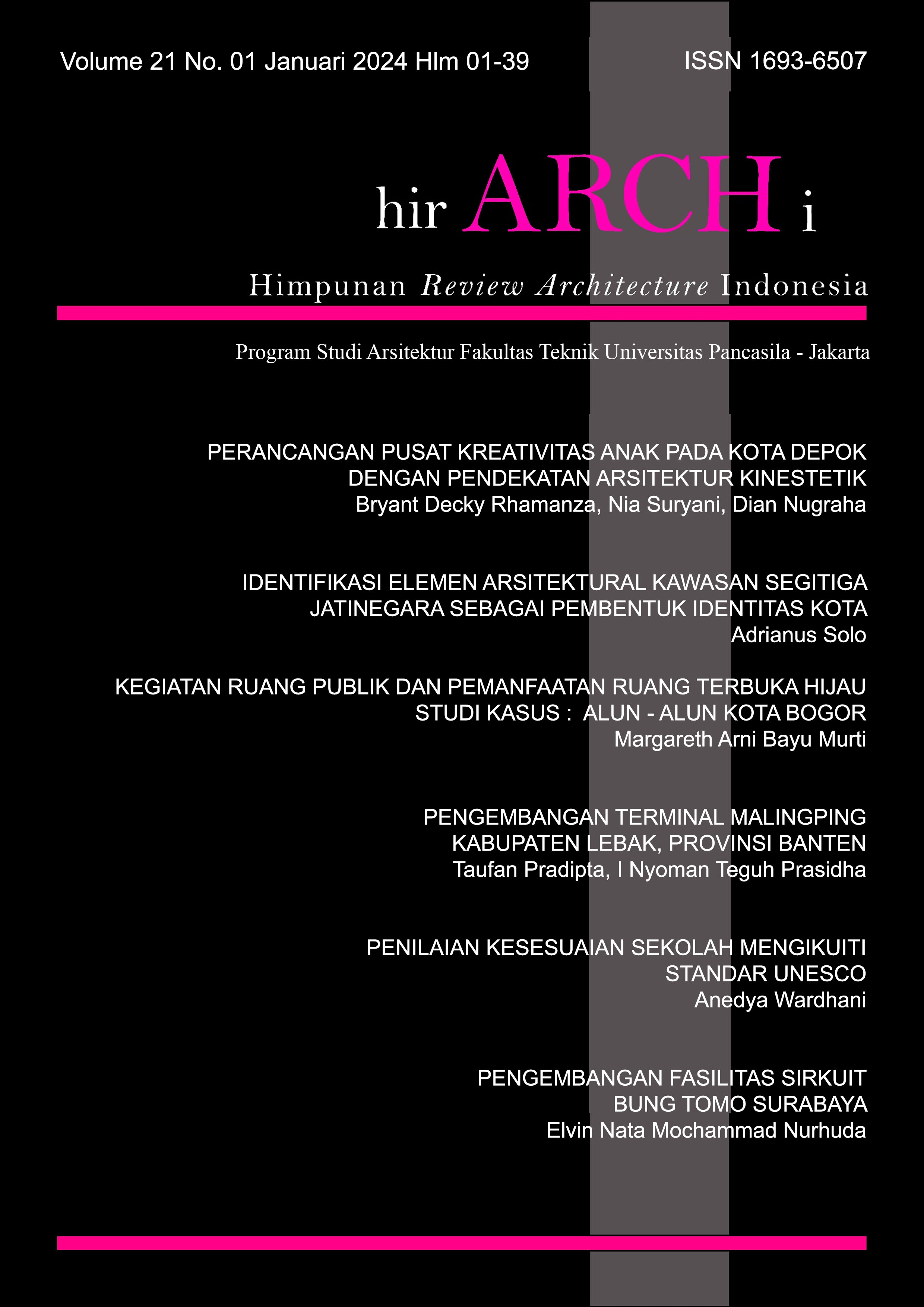Penilaian Kesesuaian Bangunan Sekolah Mengikuti Pedoman UNESCO
Abstract
Educational building facilities have a very important role for a nation. This paper discusses assessing the conformity of school buildings with the guidelines set by UNESCO. The research method was carried out using a detailed assessment analysis by comparing State Middle School buildings in Cianjur district, West Java against UNESCO guidelines, with a focus on aspects such as the environment, learning areas and supporting areas. The main objective of this research is to understand the extent to which school buildings in Indonesia meet international standards in the educational context and provide insight into the importance of conformity of school buildings with UNESCO guidelines. By identifying potential areas requiring improvement, this paper serves as a guide for formulating recommendations to improve the quality of educational facilities. The results of this assessment provide an assessment that 80.17% of school buildings in Cianjur district are in accordance with the guidelines set by UNESCO. By involving education stakeholders and policy makers, it is hoped that the results of this research can encourage positive changes in meeting international education standards.
References
Olutola, A. D., “Education facilities and students’ performance in WASC examinations,” International Journal of Education Management, I, 22-25, 1989.
Akomolafe, C. O., dan Adesua, V. O., “The Impact of Physical Facilities on Students' Level of Motivation and Academic Performance in Senior Secondary Schools in South West Nigeria,” Journal of Education and Practice, 7(4), 38-42, 2016.
Kementrian Pendidikan Nasional Republik Indonesia. (2007): Peraturan Menteri Pendidikan Nasional Republik Indonesia no. 24 tahun 2007 tentang Standar Sarana dan Prasarana Untuk Sekolah Dasar/Madrasah Ibtidaiyah (SD/MI), Sekolah Menengah Pertama/Madrasah Tsanawiyah (SMP/MTs), Dan Sekolah Menengah Atas/Madrasah Aliyah (SMA/MA).
Departemen Pendidikan Nasional, Pembakuan Bangunan dan Perabot Sekolah Menengah Pertama. Direktorat Jenderal Pendidikan Dasar dan Menengah. Jakarta, 2007.
Peraturan Menteri Pekerjaan Umum Nomor: 29/PRT/M/2006 tentang Pedoman Persyaratan Teknis Bangunan Gedung.
UNESCO, Design Guide For Secondary Schools in Asia, UNESCO Regional for education in Asia, 1977.
Hatmoko, AU., Wulandari, W., Alhamdani, R. M., dan Lionar, A. L., Arsitektur Fasilitas Pendidikan, Global Rancang Selaras, Yogyakarta, 2014.
A.S. Putri, Imbardi, W. Masrul, “Analisis Kenyamanan Termal Perancangan Ruang Kelas Berbasis Bukaan Jendela Pada Sekolah Islam Terpadu di Rupat Utara,” Jurnal Arsitektur Melayu dan Lingkungan, vol. 10, no. 1, 13-25, 2023.
Nizarli, H. Sawab, T. Ivan, “Evaluasi Desain Ventilasi Untuk Pencapaian Kenyamanan Termal Pada Bangunan Sekolah,” Jurnal Arsitektur dan Perencanaan RAUT, vol. 1, no. 2, 1-9, 2020.
N. Tan, S.A. Suwarlan, C.D. Aguspriyanti, “Peningkatan Kenyamanan Termal Sekolah di Iklim Tropis Pesisir Melalui Konsep Bioclimatic Architecture,” Journal of Architecture Design and Development, vol. 4, 2023.
F. Dewantoro, & A. Widodo, “Kajian Pencahayaan Dan Penghawaan Alami Desain Hotel Resort Kota Batu Pada Iklim Tropis,” Journal of Infrastructural in Civil
A.S. Ayu, Gambaran Sanitasi di Sekolah Dasar Negeri Se-Kecamatan Terusan Nunyai Kabupaten Lampung Tengah. Tesis, 2020.









